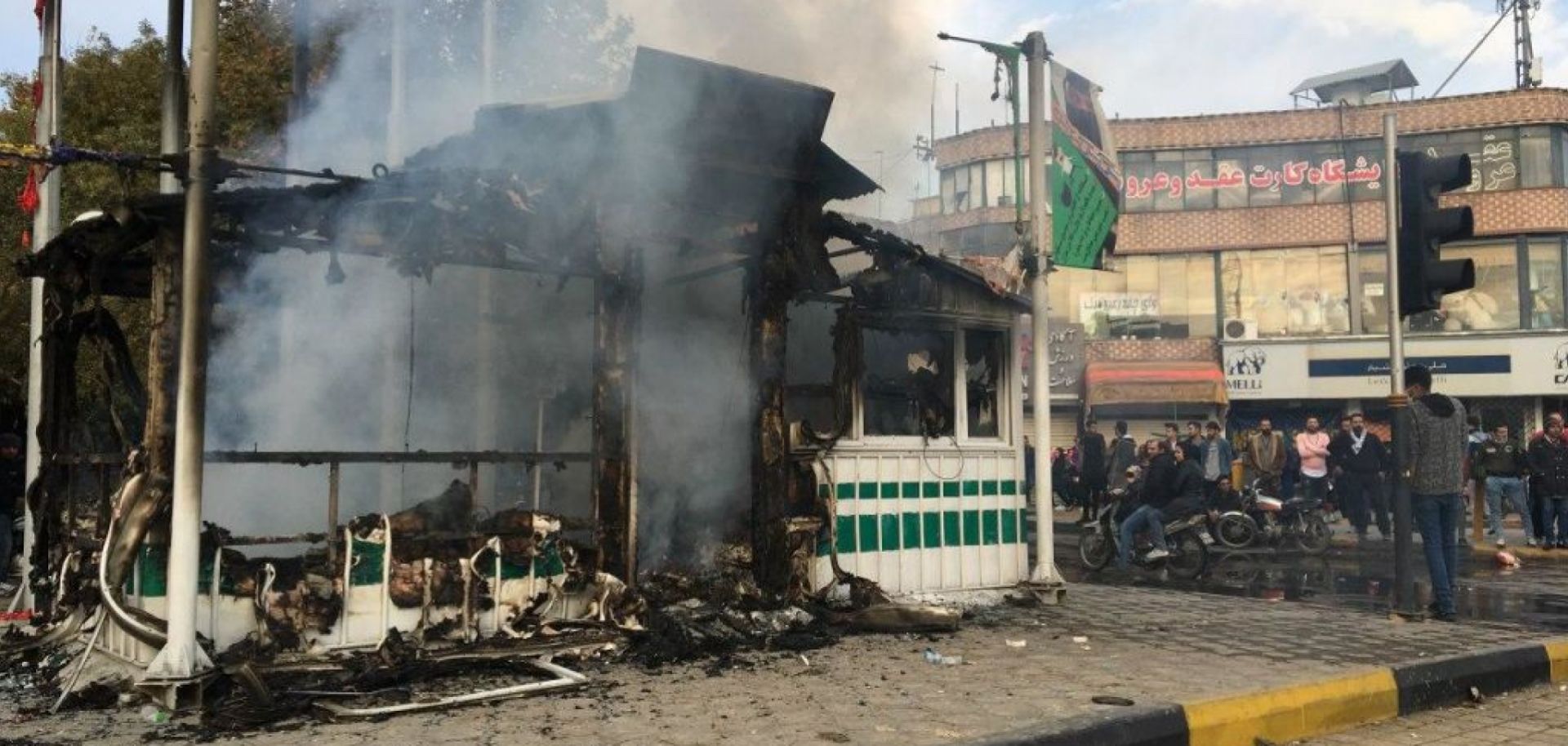ASSESSMENTS
Iran Scrambles To Manage the Fallout of a Fuel Price Hike
Nov 17, 2019 | 20:26 GMT

A crowd gathers in Isfahan, Iran, around the smoldering remains of a police station set ablaze by protesters during a demonstration against a fuel price rise on Nov. 17, 2019.
(AFP via Getty Images)
Highlights
- Given major regional protest movements against austerity measures, including in Iraq and Lebanon where Iran has strong political influence, Tehran would only have hiked fuel prices as an absolute economic necessity.
- If necessary, Iran will keep protests under control with violent crackdowns, allowing it to continue to weather the economic pain of sanctions and avoid having to offer major concessions to the United States.
- Iran hopes that prudent economic management, including austerity measures like reducing fuel subsidies, along with managing domestic unrest, will allow it to hold out at least until after U.S. presidential elections before having to enter comprehensive negotiations with the West to remove sanctions.
- Even though Iran's political leadership appears unified behind the recent fuel price hike, President Hassan Rouhani and his allies will bear the brunt of the political backlash.
Subscribe Now
SubscribeAlready have an account?
